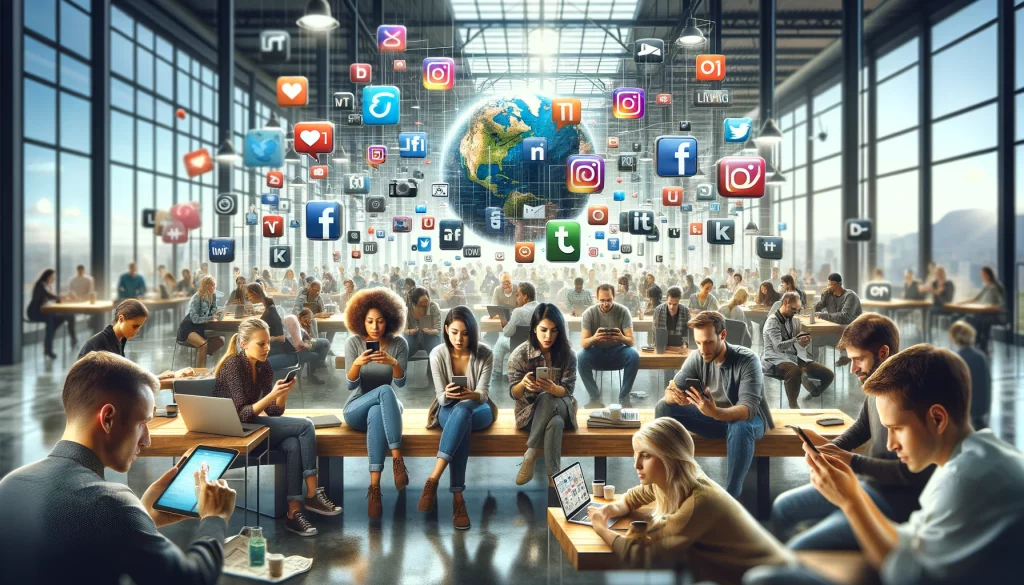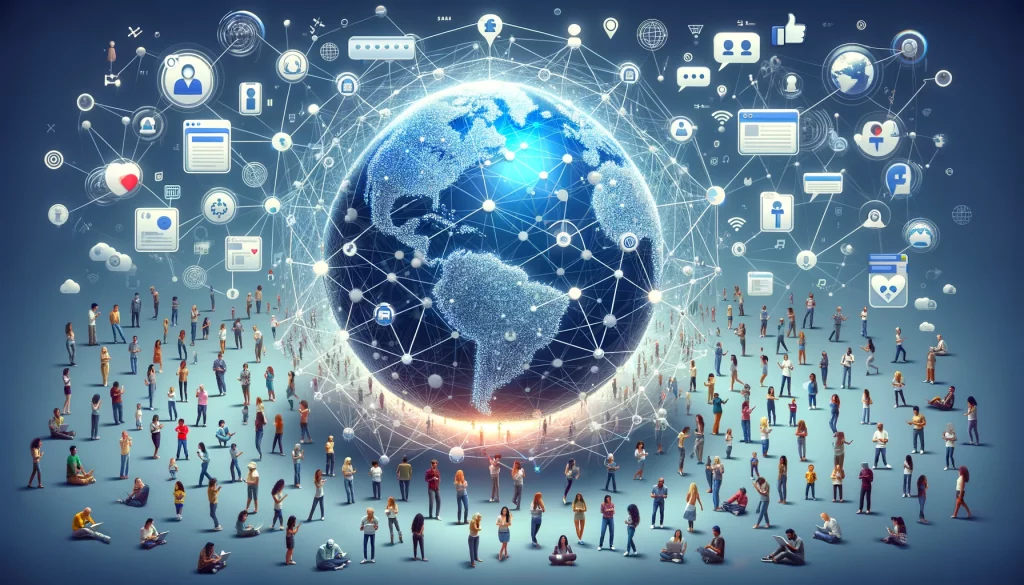No products in the cart.
Twitter, a platform that has shaped the way we consume news, interact with celebrities, and engage in public discourse, continues to be a central figure in the social media landscape. Here are 50 Twitter statistics that shed light on its influence, user behavior, and more.
Contents
hide
General Statistics
Twitter, a microblogging platform, has grown into a global powerhouse for real-time news, entertainment, and social interaction. With its unique blend of brevity and immediacy, Twitter allows users to share quick thoughts, links, and media. These general statistics offer a snapshot of the platform’s scale and reach, demonstrating its significant role in digital communication and global discourse. From active user counts to tweet volumes, this section lays the foundation for understanding Twitter’s vast ecosystem.
- Active Users: Twitter reports over 330 million monthly active users.
- Daily Active Users: Over 192 million users are active on Twitter daily.
- Tweet Volume: Users send around 500 million tweets per day.
- Account Creation: Over 1.3 billion accounts have been created since Twitter’s inception.
User Demographics
Understanding who uses Twitter sheds light on its cultural impact and marketing potential. This section dives into the demographics of Twitter’s user base, including gender, age, and geographical distribution. By examining these statistics, we can gain insights into the diverse audience that Twitter attracts, providing valuable information for content creators, marketers, and policymakers aiming to engage with specific segments of the population.
- Gender Split: Approximately 70% of Twitter users are male, while 30% are female.
- Age Distribution: 38% of Twitter users are aged between 18 and 29, making it the largest age group on the platform.
- Global Reach: The United States has the highest number of Twitter users, followed by Japan and India.
- Language Diversity: English is the most used language on Twitter, followed by Japanese and Spanish.
Usage Patterns
Twitter’s usage patterns reveal how people interact with the platform throughout their daily lives. From the average time spent per session to the predominance of mobile access, these statistics illustrate the habits and preferences of Twitter users. Analyzing usage patterns helps understand the platform’s role in information dissemination, social interaction, and digital consumption, highlighting the moments when Twitter becomes the go-to source for news, entertainment, and community engagement.
- Daily Time Spent: The average user spends 3.39 minutes per session on Twitter.
- Mobile Usage: About 80% of Twitter’s access comes from mobile devices.
- News Consumption: 71% of Twitter users say they use the platform to read news.
- Engagement Peaks: The best times to post for engagement are Wednesdays and Fridays at 9 AM.
Engagement and Content
The essence of Twitter lies in its engagement and content dynamics. This section explores how tweets perform, the impact of different types of content, and the behaviors that drive user interaction. From the power of hashtags to the rising importance of video, these statistics offer a glimpse into what makes content successful on Twitter. Understanding these aspects is crucial for anyone looking to maximize their impact on the platform, whether for personal expression or strategic marketing.
- Most Followed Account: As of 2023, the most followed account is Barack Obama, with over 130 million followers.
- Hashtag Usage: Tweets with hashtags receive 100% more engagement.
- Video Content: Tweets with video attract 10 times more engagements than those without.
- Influencer Marketing: 40% of Twitter users have made a purchase as a direct result of an influencer’s tweet.
Business and Advertising
Twitter is not just a social platform; it’s a vital tool for businesses and advertisers seeking to reach a broad and engaged audience. This section highlights the platform’s advertising capabilities, revenue, and the effectiveness of marketing efforts on Twitter. With insights into ad reach, engagement rates, and financials, businesses can better navigate the Twitter landscape to connect with their target audience, promote their brand, and achieve their marketing objectives.
- Ad Reach: Twitter ads can potentially reach up to 5.8% of the global population over 13.
- Ad Engagement: The average engagement rate for ads is 1.9%.
- Revenue: Twitter generated $3.7 billion in revenue in 2022.
- Advertising Cost: The cost per engagement (CPE) on Twitter ads is approximately $0.50 to $2.00.
Twitter Spaces and New Features
Innovation is key to Twitter’s continued relevance and growth. The introduction of Twitter Spaces and other new features marks the platform’s expansion beyond text-based content, embracing the dynamic world of audio social networking. This section delves into how these innovations are being adopted by users and their potential to reshape interactions on Twitter. It reflects on Twitter’s commitment to staying at the forefront of social media trends and providing users with new ways to connect and share experiences.
- Twitter Spaces: Launched in November 2020, Spaces is Twitter’s answer to the rise of audio social, with millions participating in conversations.
- Feature Adoption: Early data suggests that 45% of Twitter users have participated in or listened to a Space.
Historical and Fun Facts
Twitter’s journey from its inception to becoming a social media giant is filled with milestones, records, and intriguing tidbits. This section covers historical highlights and fun facts about Twitter, offering a lighter look at the platform’s evolution, cultural milestones, and the moments that have captured the world’s attention. These anecdotes not only entertain but also illustrate Twitter’s significant impact on global communication and culture.
- First Tweet: The first-ever tweet was sent by co-founder Jack Dorsey on March 21, 2006.
- Record Tweets: The record for the most tweets in a second is 143,199 tweets and occurred during the 2013 airing of “Castle in the Sky” in Japan.
- Logo Evolution: Twitter’s logo has evolved from a simple wordmark to the iconic bird, named “Larry the Bird”.
Twitter and Society
Twitter’s influence extends far beyond the digital realm, affecting politics, society, and global movements. This section examines the platform’s role in shaping public opinion, facilitating political discourse, and mobilizing social change. Through hashtags like #BlackLivesMatter and #MeToo, Twitter has proven to be a powerful tool for activism and community building, demonstrating the platform’s capacity to influence societal norms and contribute to global conversations on critical issues.
- Political Influence: 83% of world leaders have Twitter accounts.
- Crisis Communication: During disasters, Twitter sees a surge in usage, with a 500% increase in tweets related to the event.
- Activism Hashtags: #BlackLivesMatter and #MeToo have been among the most impactful activism hashtags on Twitter.
Challenges and Controversies
Despite its successes, Twitter faces challenges and controversies, from dealing with fake accounts and cyberbullying to combating misinformation. This section addresses the platform’s ongoing struggles to create a safe, authentic, and trustworthy environment for its users. By confronting these issues head-on, Twitter aims to enhance user experience and maintain its position as a trusted source of information and social interaction in the digital age.
- Fake Accounts: It’s estimated that up to 15% of Twitter accounts are bots or fake accounts.
- Cyberbullying: 24% of American teens have experienced cyberbullying on Twitter.
- Misinformation: Twitter is actively combating misinformation, with thousands of tweets labeled for misleading content annually.
Looking Ahead
The future of Twitter is a topic of much speculation and anticipation. With plans for growth, innovation in AI, and improvements in privacy and security, Twitter is poised for continued evolution. This section outlines the platform’s direction and potential developments, emphasizing Twitter’s commitment to enhancing user engagement, content relevance, and overall platform integrity. As Twitter navigates the rapidly changing social media landscape, its adaptations and innovations will shape its trajectory and impact on users worldwide.
- Growth Projections: Analysts predict Twitter’s user base will grow by 2.4% in 2024.
- Innovation Focus: Twitter plans to invest in AI and machine learning to enhance content relevance and user experience.
- Privacy and Security: Ongoing efforts aim to improve data privacy and security for users amid rising cyber threats.
Miscellaneous
Twitter’s ecosystem is rich with diverse content, emoji use, customer service interactions, and research applications. This miscellaneous section touches on the lesser-known but equally fascinating aspects of Twitter, highlighting its versatility and the myriad ways it intersects with daily life, commerce, and academia. From setting retweet records to fostering business growth, Twitter’s multifaceted nature provides endless opportunities for exploration, engagement, and discovery.
- Emoji Usage: Over 700 million emojis are tweeted each year.
- Retweet Record: The most retweeted tweet is Yusaku Maezawa’s tweet offering 1 million yen to 100 people, reaching over 4 million retweets.
- Customer Service: 85% of SMBs use Twitter for customer service.
- Twitter for Research: Academics increasingly use Twitter data for research on social trends and public opinion.
Global Impact
Twitter’s global impact is undeniable, serving as a vital communication tool during international events, promoting language diversity, and enhancing digital literacy. This section explores Twitter’s influence across borders, its role in disseminating information during significant global occurrences, and its efforts to support users in navigating the digital world responsibly. Twitter’s global footprint underscores its importance as a platform for connecting people, ideas, and movements worldwide.
- International Events: Twitter plays a pivotal role in the dissemination of information during global events like the Olympics and FIFA World Cup.
- Language Processing: Twitter’s investment in natural language processing aims to improve user experience across different languages.
- Digital Literacy: Twitter partners with organizations worldwide to promote digital literacy and safe internet usage.
Economic Influence
Twitter’s economic influence is significant, affecting market trends, supporting small business growth, and playing a pivotal role in the influencer economy. This section delves into the platform’s impact on the business world, including its importance to investors, its utility for customer acquisition, and its role in connecting brands with influential voices. Twitter’s ability to drive economic activity highlights its importance not just as a social network but as a key player in the global economy.
- Market Trends: Twitter’s stock (TWTR) is closely watched by investors for insights into the tech and social media sectors.
- Small Business Growth: 67% of businesses report gaining new customers through Twitter engagement.
- Influencer Economy: Twitter is a key platform in the influencer economy, connecting brands with influential voices.
Sustainability and Corporate Responsibility
Twitter’s commitment to sustainability and corporate responsibility reflects its awareness of the broader impact of its operations. This section highlights the platform’s eco-friendly initiatives, charity work, and efforts to promote social good. Through these actions, Twitter demonstrates its dedication to not just serving its user base but also contributing positively to the world, underlining the role of corporate responsibility in today’s business practices.
- Eco-Friendly Initiatives: Twitter has committed to reducing its carbon footprint and promoting sustainability in its operations.
- Charity and Philanthropy: Twitter’s philanthropic efforts support various causes, including disaster relief and mental health.
Technical Innovations
At its core, Twitter is a product of technical innovation, continually updating its algorithm, expanding its API ecosystem, and exploring new technologies like blockchain. This section focuses on the technical advancements that keep Twitter at the forefront of social media innovation, ensuring that the platform remains relevant, efficient, and engaging for users. By leveraging the latest in tech, Twitter aims to enhance the user experience and open new possibilities for content creation, distribution, and monetization.
- API Ecosystem: Twitter’s API is used by thousands of developers to create third-party applications and analysis tools.
- Algorithm Updates: Regular updates to Twitter’s algorithm aim to enhance content visibility and user engagement.
- Data Analytics: Twitter offers extensive analytics tools for users to track engagement, reach, and performance metrics.
- Future Technologies: Twitter is exploring blockchain and cryptocurrency integration for payments and content monetization.
Frequently Asked Questions
How many people use Twitter every day?
As of the last update, Twitter has over 192 million daily active users engaging with the platform worldwide.
What is the most followed account on Twitter?
The most followed account on Twitter is Barack Obama, with over 130 million followers.
Can businesses advertise on Twitter?
Yes, businesses can advertise on Twitter using various ad formats designed to increase visibility, engagement, and website traffic. Twitter offers targeted advertising solutions to reach specific audiences.
What are Twitter Spaces?
Twitter Spaces are live audio conversations on Twitter where users can host, join, or listen to live discussions. They represent Twitter’s entry into the social audio space.
How does Twitter handle fake accounts and bots?
Twitter actively works to identify and remove fake accounts and bots through a combination of technology, reporting tools, and user policies designed to maintain platform integrity.
What is the average engagement rate for Twitter ads?
The average engagement rate for Twitter ads is around 1.9%, varying by industry, campaign objective, and content quality.
How effective is Twitter for news consumption?
Twitter is highly effective for news consumption, with 71% of its users reporting that they use the platform to read news, making it a primary source of real-time information.
What is the best time to post on Twitter for maximum engagement?
The best times for posting on Twitter for maximum engagement are typically on Wednesdays and Fridays at 9 AM, although this can vary based on the audience’s location and habits.
How does Twitter combat misinformation?
Twitter combats misinformation by labeling potentially misleading information, reducing its spread, and providing additional context through trusted sources. The platform continuously updates its policies and tools to address misinformation effectively.
Are there analytics tools available for Twitter users?
Yes, Twitter provides analytics tools that allow users to track engagement, reach, and performance metrics for their tweets and accounts, offering insights into how their content performs on the platform.
Can I use Twitter for customer service?
Absolutely. Many small and medium-sized businesses (SMBs) use Twitter as a customer service platform to respond to inquiries, address concerns, and engage with their customers in real-time.
What is the cost of advertising on Twitter?
The cost of advertising on Twitter can vary widely based on campaign settings, targeting options, and competition for ad space. Costs are typically based on a bidding system for impressions or engagements, with prices ranging from approximately $0.50 to $2.00 per engagement.
How does Twitter influence society and culture?
Twitter significantly influences society and culture by facilitating public discourse, enabling political activism (e.g., #BlackLivesMatter, #MeToo), and serving as a platform for real-time news and global events, thus shaping public opinion and cultural trends.
What are the main challenges Twitter faces?
Twitter faces challenges such as dealing with fake accounts, cyberbullying, and misinformation, as well as maintaining user growth and engagement in a competitive social media landscape.
What future plans does Twitter have?
Twitter plans to focus on growth by investing in artificial intelligence and machine learning to improve content relevance, enhancing user experience, and exploring new technologies such as blockchain for potential features.
Conclusion
These statistics illuminate the multifaceted nature of Twitter, highlighting its role in shaping digital communication, influencing public opinion, and driving social change. As Twitter continues to evolve, its impact on society, politics, and the global economy will undoubtedly remain a topic of interest for social media enthusiasts, marketers, and researchers alike.






